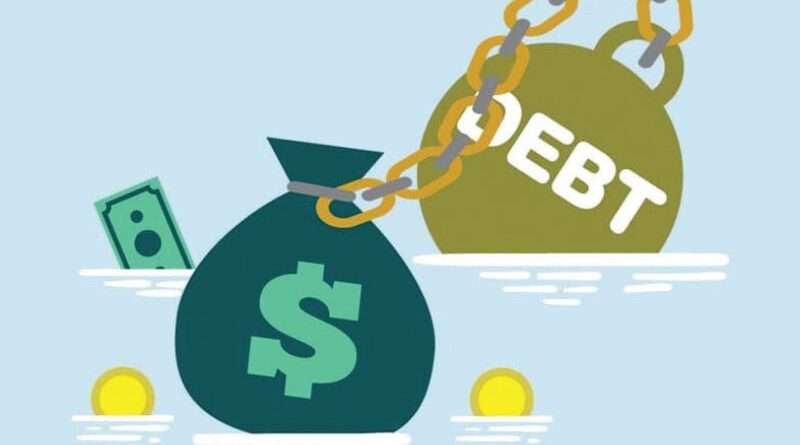Circular Debt to Hit Rs2.43 Trillion Next Year: A New Plan Exposes Inefficiencies
|
Getting your Trinity Audio player ready...
|
Government’s New Circular Debt Management Plan
The government approved a new Circular Debt Management Plan on Monday, which reveals alarming projections about the power sector’s financial health. According to the plan, costs associated with electricity theft and low bill recoveries are expected to skyrocket to Rs637 billion in the current fiscal year. Despite recent increases in electricity prices, the flow of circular debt is predicted to persist.
Projections and Financial Strain
Rather than achieving any reduction in the current Rs2.393 trillion stock of circular debt, the plan forecasts an increase to Rs2.429 trillion by June next year. This projected increase comes despite significant government measures, such as raising electricity prices and allocating Rs1.2 trillion in subsidies. The plan underscores the coalition government’s ongoing struggle to address the power sector’s inefficiencies effectively.
Questionable Assumptions
The plan is based on questionable assumptions, including a Rs300 per dollar exchange rate and an 18.44% interest rate. These assumptions could impose an undue financial burden on consumers. The Economic Coordination Committee (ECC) of the Cabinet, chaired by Finance Minister Senator Muhammad Aurangzeb, approved the Circular Debt Management Plan for 2024-25.
“The Ministry of Energy submitted the Circular Debt Management Plan for FY2024-25. The ECC approved the plan, which aims to reduce liabilities in the power sector and enhance financial sustainability,” a press statement from the Ministry of Finance stated.
Endorsement and Skepticism
Endorsed by the International Monetary Fund (IMF), the plan aims to improve the financial viability of the power sector. However, details reveal that the circular debt flow will not be reduced to zero. Moreover, the National Electric Power Regulatory Authority’s (Nepra) targets to curb losses and increase recoveries will not be met. The Ministry of Finance has voiced skepticism about the plan’s viability, suggesting that Prime Minister Shehbaz Sharif’s government may struggle to halt the power sector’s financial decline.
Budget Allocation and Subsidies
The finance ministry stated it allocated Rs1.229 trillion in the budget to address power sector subsidies and reduce the circular debt stock. Out of this allocation, over Rs580 billion is earmarked for circular debt reduction. However, the ministry informed the ECC that the circular debt stock is likely to rise by another Rs36 billion by the end of the year. The finance ministry emphasized that the objective of reducing circular debt can only be achieved once its flow is stemmed.
Rising Costs and Inefficiencies
The finance ministry also objected to the persistent rise in line losses and under-recoveries. In the last fiscal year, these costs amounted to Rs591 billion. Alarmingly, the plan projects this to grow to Rs637 billion, despite already being above the permissible limit. This highlights the significant failure of the Ministry of Energy. The finance ministry has urged the Ministry of Energy to expedite the implementation of reforms to reduce these losses.
Impact on Consumers
The plan projects that costs due to low recoveries will jump from Rs315 billion last fiscal year to Rs419 billion—a staggering 33% increase. Meanwhile, losses exceeding the permissible limits for power distribution companies are expected to decline from Rs276 billion to Rs218 billion. Rather than enacting substantial improvements, the government’s approved new plan permits 90% recoveries and 17.3% line losses, far above Nepra’s permissible 11.4% limit. This reflects the government’s admission of failure by allowing these companies to incur higher losses up to 17.3%.
Increased Electricity Prices
The plan disclosed that an additional Rs1.08 trillion will be added to the country’s circular debt in this ‘business as usual’ move, a gap the government aims to plug with increased electricity prices and Rs1.22 trillion in subsidies. However, the plan appears unrealistic, placing an undue and excessive burden on consumers. It relies on an assumed exchange rate of Rs300 per dollar—despite the current stable rate of Rs278—and an 18.44% Karachi Interbank Offered (KIBOR) rate, even though the central bank lowered the interest rate to around 16% on Monday, the same day the ECC approved the plan.
Revenue Generation
The government has already raised electricity prices by up to 51%, which is expected to generate Rs302 billion in revenue this fiscal year. In June 2023, the base electricity price, excluding all taxes, was Rs23.39 per unit, which has since increased to Rs28.44 per unit. By June 2025, the average base rate is projected to be Rs33 per unit, with additional adjustments for fuel costs and quarterly tariffs adjustments on top of the recent hikes.
Circular Debt Flow Increase
The ECC was informed that last fiscal year, there was a net Rs83 billion or 57% increase in the circular debt flow due to “Discos under-recoveries, line losses above regulatory targets, and pending generation costs.” Power Minister Sardar Awais Laghari had previously claimed publicly that circular debt did not increase in the last fiscal year. However, the ECC was informed on Monday that the debt had climbed from Rs2.310 trillion a year ago to Rs2.393 trillion by June 2024. This amount is now expected to rise further to Rs2.429 trillion by June 2025, indicating an additional Rs36 billion increase in the circular debt flow.
Ministry’s Concerns
The finance ministry’s concerns highlight the challenges in managing the circular debt. The rise in line losses and under-recoveries indicates systemic inefficiencies that need urgent attention. Despite efforts to address these issues through reforms and subsidies, the projected increase in circular debt points to the need for more effective measures.
Future Outlook
The future outlook for Pakistan’s power sector remains uncertain. With the circular debt expected to rise, consumers will likely face higher electricity prices. The government’s plan, though endorsed by the IMF, has several assumptions that could exacerbate financial strain on the population. As the country grapples with these challenges, the efficacy of the Circular Debt Management Plan will be closely scrutinized.
FAQs
1. What is circular debt in Pakistan’s power sector? Circular debt in Pakistan’s power sector refers to the accumulated financial obligations due to inefficiencies such as electricity theft, low bill recoveries, and delayed payments to power producers. This debt continues to grow as these issues persist, affecting the financial stability of the sector.
2. How does the new Circular Debt Management Plan aim to address the debt issue? The new plan aims to reduce liabilities in the power sector and enhance financial sustainability. It involves measures like increasing electricity prices and allocating subsidies. However, the plan has been met with skepticism due to its questionable assumptions and projected increase in circular debt.
3. What are the projected costs of theft and low bill recoveries for the current fiscal year? The projected costs of theft and low bill recoveries are expected to reach Rs637 billion in the current fiscal year. This significant increase underscores the ongoing inefficiencies within the power sector.
4. How will the new plan affect electricity prices for consumers? Electricity prices have already been raised by up to 51%, and further increases are expected to generate revenue to address the circular debt. By June 2025, the average base electricity rate is projected to be Rs33 per unit, excluding additional adjustments for fuel costs and quarterly tariffs.
5. What are the key challenges in implementing the new plan? The key challenges include managing the projected increase in circular debt, addressing systemic inefficiencies such as high line losses and low bill recoveries, and the financial burden on consumers due to higher electricity prices. The plan’s reliance on questionable assumptions also poses risks to its viability.




